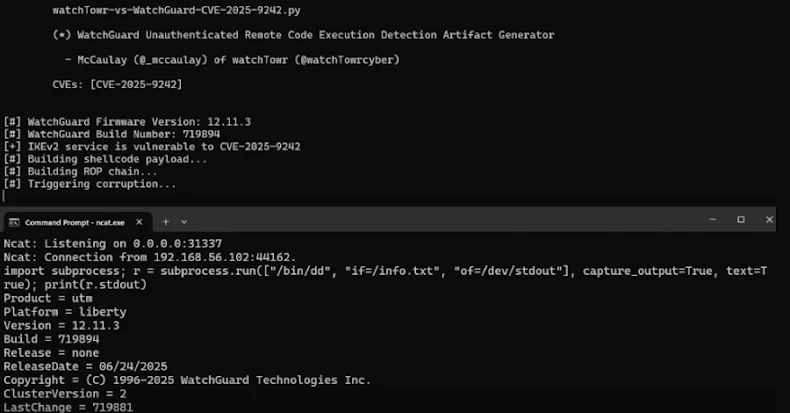Scaling the SOC with AI – Why now?
Security Operations Centers (SOCs) are under unprecedented pressure. According to SACR’s AI-SOC Market Landscape 2025, the average organization now faces around 960 alerts per day, while large enterprises manage more than 3,000 alerts daily from an average of 28 different tools. Nearly 40% of those alerts go uninvestigated, and 61% of security teams admit to overlooking alerts that later proved critical.
The takeaway is clear: the traditional SOC model can’t keep up.
AI has now moved from experimentation to execution inside the SOC. 88% of organizations that don’t yet run an AI-driven SOC plan to evaluate or deploy one within the next year.
But as more vendors promote “AI-powered SOC automation,” the challenge for security leaders has shifted from awareness to evaluation. The key question is no longer whether AI belongs in the SOC, but how to measure its real impact and select a platform that delivers value without introducing significant risks.
This article provides a practical framework for doing just that. It explores AI-SOC architectures, implementation models, and risks, while outlining phased adoption strategies and the essential questions every organization should ask before choosing a platform.
The Mindset Shift: From Legacy to a Modern SOC
Building an AI-augmented SOC starts with a mindset shift, not a technology purchase.
Legacy SOCs depend on static rules, manual triage, and reactive workflows. Analysts spend hours chasing alerts and fine-tuning detections to manage noise — a model that doesn’t scale and fuels alert fatigue.
Modern SOCs operate differently. Analysts move from doing the work to guiding the system—overseeing outcomes, validating AI decisions, and setting the policies that govern automation. Leaders must also adapt, learning to trust AI to assist analysts without replacing their judgment.
The motivation for this shift is straightforward:
- Reduce alert fatigue and prevent missed incidents
- Ensure every alert is investigated
- Improve productivity and scale SOC capacity without expanding headcount
The first step isn’t selecting a platform. It’s evolving the SOC model itself — and defining why the change is necessary.
AI-SOC Architectural Models and Delivery Framework
SACR’s AI-SOC Market Landscape 2025 defines the emerging market across four key dimensions — what the platform automates, how it’s delivered, how it integrates, and where it runs.
1. Functional Domain – What it automates
The first dimension describes what part of the SOC life-cycle the platform targets and how advanced its automation is.
Automation / Orchestration (SOAR+) & Agentic SOC
These systems function as the SOC’s central nervous system, coordinating actions across SIEM, EDR, cloud, and ticketing tools. They combine deterministic rules with agentic AI that can reason, enrich alerts, and execute containment steps automatically.
Unlike traditional SOAR tools, they move beyond static playbooks — dynamically sequencing responses across multiple systems. Their strength lies in scale and consistency, making them well-suited for complex enterprise or MSSP environments.
Pure-Play Agentic Alert Triage
Focused on the SOC’s most persistent challenge: alert overload. These platforms deploy Agentic AI analysts to triage, investigate, and prioritize alerts, filtering false positives and escalating only validated threats.
This approach delivers immediate operational value by reducing Tier-1 workload and ensuring that every alert receives at least an initial level of investigation. For many teams, it represents the most practical starting point for adopting AI in the SOC, as it integrates easily with existing tools.
Analyst Co-Pilot / Investigation Assist
Acts as a digital assistant for human analysts. It helps generate queries, summarize evidence, and assemble context during investigations, improving speed and accuracy while keeping human judgment central.
Workflow / Knowledge Replication
Captures how experienced analysts investigate incidents and replays those workflows as repeatable automation. This model scales institutional knowledge and ensures consistency across teams, though it requires time and expert input to train effectively.
2. Implementation Model (How It’s Delivered)
This dimension defines how much control an organization retains over how automation is built, tuned, and maintained. SACR identifies two primary implementation models.
User-Defined / Configurable
These platforms offer partial to full flexibility. Security teams can design and adjust agents, detection logic, and workflows using scripting or low-to-no-code interfaces. The result is a SOC environment customized to internal processes — but one that requires skilled personnel and ongoing maintenance.
This model is typically favored by mature enterprises or managed service providers that value adaptability and ownership over simplicity.
Pre-Packaged / Black-Box
Delivered as ready-to-run solutions with vendor-managed agents and prebuilt workflows. These platforms can be deployed quickly, provide fast time-to-value, and benefit from continuous vendor R&D. The trade-off is limited visibility into decision logic and less ability to customize.
They are best suited for teams prioritizing ease of use and rapid modernization over granular control.
3. Architecture Type (How It Integrates)
AI-SOC platforms differ in how they integrate into the broader SOC life-cycle and where they source and process data. SACR’s AI-SOC Market Landscape 2025 identifies three primary integration models, with Integrated AI-SOC Platforms emerging as the most comprehensive approach.
Integrated AI-SOC Platforms
These platforms ingest and analyze raw security logs directly, functioning as both an AI-SOC and, in many cases, a SIEM alternative. By maintaining their own data stores, they enable historical baselines, anomaly detection, and retrospective investigation, all within a unified system.
The key advantage is full visibility and analytical depth. Integrated platforms reduce dependence on external SIEMs, consolidate triage and response in one control plane, and significantly lower log-storage and licensing costs.
This model aligns closely with the industry’s move toward unified operations — where detection, investigation, and response happen in a single workflow instead of across stitched-together tools.
Connected & Overlay Model (on Existing SOC/SIEM)
It adds an intelligent AI layer to current systems via APIs. The platform ingests alerts from tools such as SIEMs, EDRs, and cloud services, then enriches, triages, and reports results back to analysts.
Its appeal lies in speed. It delivers value quickly and requires no data migration or infrastructure changes. However, it relies on the quality of upstream alerts and offers limited behavioral analytics, since it typically lacks access to raw telemetry.
Human &Browser-Based Workflow Emulation
This approach replicates how analysts work within existing interfaces, observing their actions and replaying investigations automatically. It helps scale expert knowledge and drive consistency, but requires initial setup and validated analyst workflows to perform effectively.
4. Deployment Model (Where It Runs)
Finally, deployment options determine where the AI-SOC operates and how data is managed.
- SaaS: Hosted entirely by the vendor and accessed over the internet. Fastest to deploy and easiest to maintain.
- BYOC (Bring Your Own Cloud): The vendor provides the AI layer, but data and infrastructure remain in the customer’s cloud environment. This is common for teams balancing compliance with flexibility.
- Air-Gapped On-Prem: Fully isolated deployment for regulated industries or high-security environments where external connectivity is not permitted.
Risks and Considerations When Adopting an AI-SOC Platform
AI-driven SOCs promise efficiency and speed, but also introduce new categories of potential risks. SACR highlights several, and additional considerations deserve equal attention.
- Lack of Standardized Benchmarks – There is currently no universally accepted method for measuring AI-SOC accuracy, efficiency, or ROI. Without standardized metrics, vendor comparisons often rely on marketing claims rather than validated outcomes.
- Opaque Decision-Making (Explainability Risk) – Some systems operate as black boxes, offering little visibility into how alerts are analyzed or classified. This limits transparency, makes auditing difficult, and can reduce analyst trust in automated outcomes.
- Compliance and Data Residency – Cloud-hosted AI systems can raise concerns about where data is processed and stored, particularly in regulated sectors. Teams should verify compliance with frameworks such as GDPR, ISO 27001, and local data residency laws.
- Vendor Lock-In – Integrated platforms that centralize data storage or detection logic can create migration challenges over time. Clear data export policies and open APIs are essential for maintaining flexibility.
- Skill Shift and Change Management – AI-SOCs change how analysts work. Teams shift from manual investigation to automation oversight, which can lead to uncertainty or skill gaps if retraining isn’t planned. Structured onboarding and updated workflows are critical for success.
- Integration Complexity – Platforms that don’t integrate cleanly with existing SIEM, EDR, and case management systems can add friction instead of reducing it. Evaluating API coverage and interoperability should be part of the selection process.
- Over-Reliance on Automation – Treating automation as infallible introduces risk. AI systems should complement, not replace, human judgment, with clear escalation and override mechanisms to prevent blind spots.
- Model Drift and Update Frequency – AI performance can degrade over time if models aren’t retrained regularly with new threat intelligence and environmental data. Ongoing monitoring and retraining cadence should be confirmed with vendors.
- Economic Risk – Pricing models that charge by data volume or event ingestion can quickly erode the cost benefits of automation. Evaluating the total cost of ownership across data, users, and response volume is key to long-term sustainability.
Mitigating these risks starts with transparency — selecting solutions that provide explainability, flexible integration, strong governance, and a clear balance between automation and human control.
What to Ask Your AI-SOC Vendor
Selecting the right AI-SOC platform requires a structured, evidence-based evaluation.
SACR’s AI-SOC Market Landscape 2025 provides a strong foundation for due diligence, highlighting the questions that help security leaders separate proven capabilities from marketing claims.
Detection and Triage
- What percentage of alerts are triaged automatically versus escalated to analysts?
- How are low-confidence or ambiguous alerts handled to avoid missed detections?
- Can the AI’s reasoning and verdicts be audited by analysts for validation?
These questions help determine how automation interacts with human oversight and how reliably the system maintains coverage without sacrificing accuracy.
Data Ownership and Privacy
- Who retains ownership of ingested data and alerts once inside the platform?
- Where is security data stored, and can customers manage retention, deletion, or export?
Clarifying how data is managed, stored, and controlled ensures compliance with internal governance and external regulatory requirements.
Explainability and Human Control
- Can analysts override AI verdicts or modify investigation outcomes?
- How is analyst feedback incorporated into system retraining or future decisions?
- What safeguards exist to prevent incorrect automated actions or over-escalation?
These questions help confirm the level of transparency, explainability, and human control within the AI’s decision-making loop.
Integration and Tech-stack Fit
- Does the platform integrate with existing SIEM, EDR, identity, and ticketing systems?
- Can it operate within the current SOC workflow without introducing additional interfaces or tool sprawl?
Understanding how the platform fits into the existing security stack helps prevent integration friction and avoid replacing one layer of complexity with another.
Pricing and Scalability
- Is pricing based on data volume, alert count, or user capacity?
- How does cost scale as the organization adds new log sources or increases data velocity?
- What is the expected time to achieve full operational value post-deployment?
Cost structure, scalability, and deployment timelines are key to understanding both immediate and long-term return on investment.
An effective vendor evaluation balances technical depth with operational realism.
The most important questions are not just about what the AI can do, but also about how it does it, how it fits into existing workflows, and how its decisions can be understood, verified, and improved over time.
AI-SOC Adoption Framework
SACR outlines a straightforward, phased approach to AI-SOC adoption that balances speed with operational trust.
- Define the AI Strategy – Identify the specific challenges AI should solve, such as alert fatigue, MTTR, or staffing constraints. Align objectives with business outcomes.
- Select Core Capabilities – Prioritize triage, investigation, response automation, explainability, and data governance.
- Run a Proof of Concept (POC) – Evaluate performance using real alert data from your environment. Measure improvements in detection and response times.
- Trust-Building Phase (1–2 Months) – Allow AI to operate in an “assist” mode, while analysts validate its decisions. Implement feedback loops to fine-tune confidence thresholds.
- Gradual Automation – Enable autonomous response for low-risk events first, then scale up as trust grows.
- Operationalize and Iterate – Continuously review false positives, analyst feedback, and integration efficiency. Periodically recalibrate models and policies.
Organizations treating AI as a partner, not a replacement, see the most sustainable outcomes.
Measuring Success Over Time
Short-Term (0–3 months)
- Reduction in alert triage length
- Increased alert coverage percentage
- Reduction in alerts per analyst
Mid-Term (3–9 months)
- Shorter mean time to respond (MTTR)
- At least a 35% reduction in false positives and manual investigations
- Reduced analyst burnout and turnover
Long-Term (9 months +)
- Stable automation performance across incident types
- Predictable SOC operating costs
- Improved auditing and compliance reporting
Each metric should relate to a business outcome. Focusing on high-value work can reduce missed alerts, improve response consistency, and increase analyst productivity.
Conclusion
AI-SOC platforms are reshaping how security teams detect, investigate, and respond to threats at scale.
But success depends on more than advanced technology. It requires understanding architectures, evaluating risks, and adopting automation in stages that build trust and transparency.
Teams that balance AI-driven efficiency with explainability and human oversight will be best positioned to achieve faster, more resilient security operations.
For deeper insights and vendor evaluations, read the full SACR AI-SOC Market Landscape 2025 Report.
It offers detailed benchmarks, architectural comparisons, and adoption guidance for security leaders assessing AI-driven solutions.
About Radiant Security
Radiant Security is the unified AI-SOC platform that combines agentic triage, automated response, and integrated log management, eliminating the need to stitch tools together.
The platform is the only AI-SOC that can triage 100% of alerts, regardless of the source, providing complete coverage over the IT infrastructure.
Radiant is more like an SOC operating system than a point product, and SACR recognized it as the “most unique value proposition.” It helps security teams scale capacity, improve outcomes, and control costs with complete visibility and analyst oversight.
Book a demo to see how Radiant enables faster, smarter, and more cost-effective security operations.
Found this article interesting?
This article is a contributed piece from one of our valued partners. Follow us on
Google News,
Twitter and
LinkedIn to read more exclusive content we post.



























